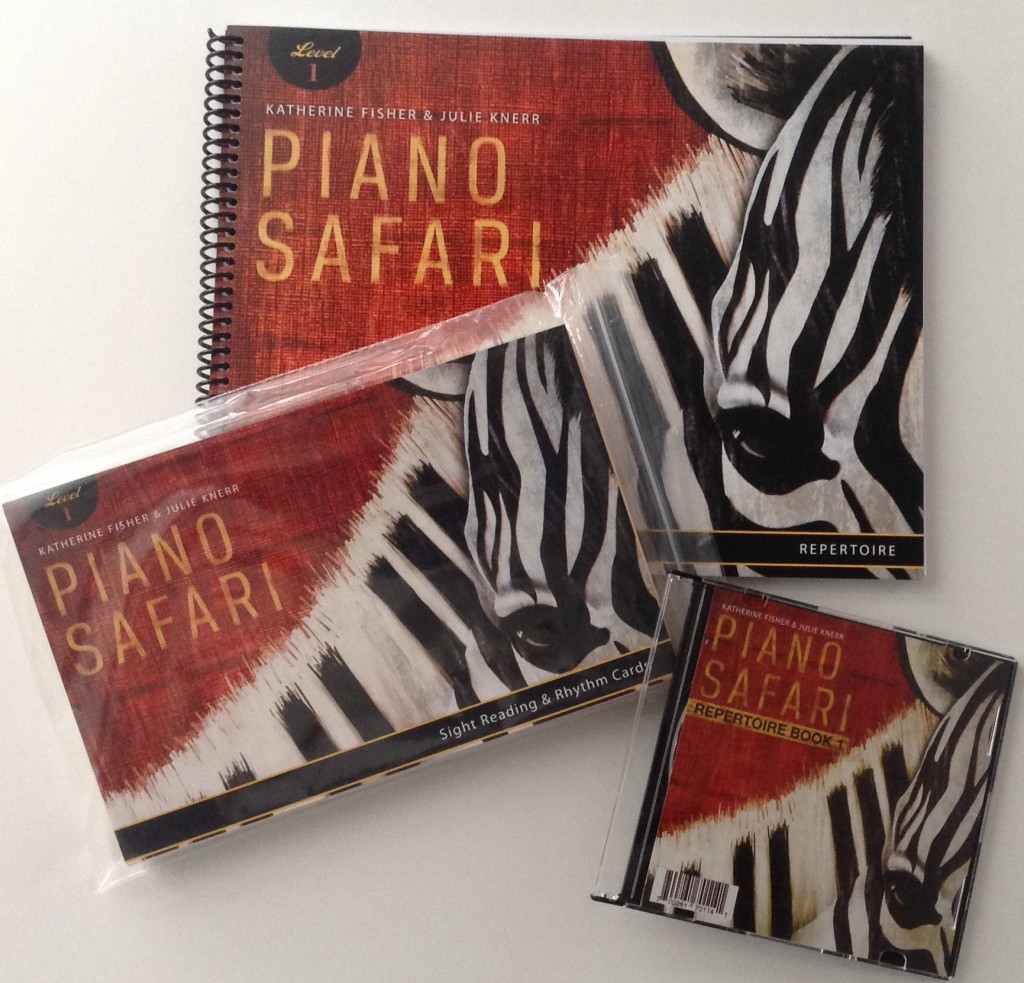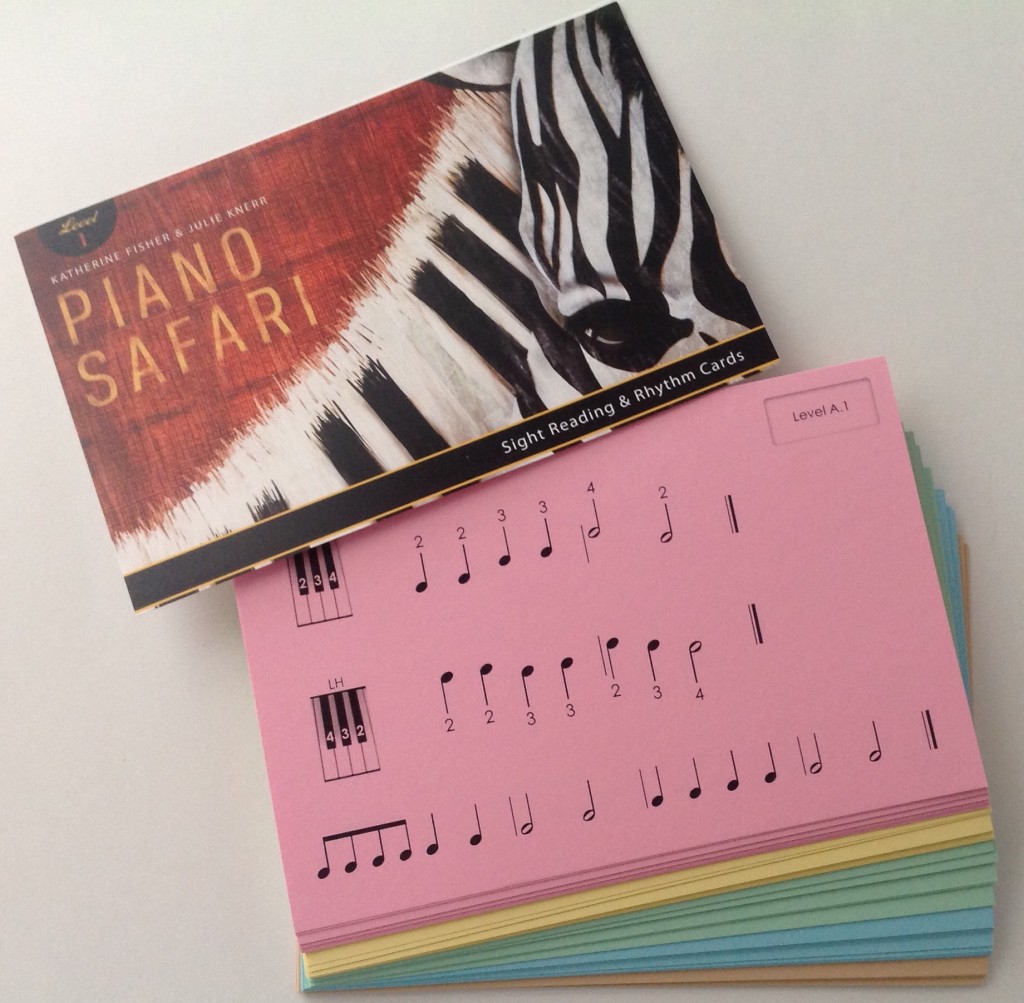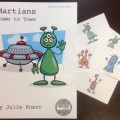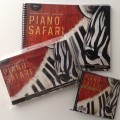June 2017 Update:
Since writing this review in 2015, I have been teaching the Piano Safari method consistently for two years. I have used it with beginners, adults, and transfer students. I have been extremely impressed with the way students are able to read music by the end of Level 2. This is by far my favorite method for teaching piano!
As I’ve been teaching the series, I’ve also made some supplements along the way. Be sure to check out the free downloads on this page in addition to the Grand Staff Note Speller. The Grand Staff Note Speller coordinates with Level 2 of Piano Safari.
I’ve been very interested in Katherine Fisher and Julie Knerr’s piano method, Piano Safari. I’ve studied piano method books in piano pedagogy courses and am constantly trying new ones with students. Piano Safari is by far the most comprehensive method I’ve seen.
I played through the Level 1 Pack, which includes:
- Repertoire Book
- Sight Reading & Rhythm Cards
- Listening CD
Piano Safari not only uses an intervallic approach to note reading, but also includes rote pieces. The rote pieces will develop the student’s listening skills from the very beginning. The student can use the listening CD to listen to rote pieces before learning the piece with a teacher. The rote pieces allow the student to develop his or her technique and to play beyond the typical level of a first-year student. In the Level 1 Repertoire book, students learn seven different motions (named after animals) that provide a solid foundation for piano technique.
An initial concern for learning rote pieces would be that reading skills might suffer during the time of learning by rote. The teacher can easily supplement learning by rote with the Sight Reading & Rhythm Cards. Each sight reading & rhythm card includes a reading and rhythm example.
The Level 1 Pack is intended to take about a year with students. It may seem like a long time for just one level, but I agree with the creators that the first year is crucial for laying a solid foundation for students.
What if a student is already learning from a different method?
The rote pieces can be purchased as a separate book that also comes with a listening CD. Students can still learn the rote pieces and “animal techniques” while using a different method book. The Sight Reading & Rhythm Cards can also be used without using the repertoire book. I ordered all three levels of the Sight Reading & Rhythm Cards to use with students.
Katherine Fisher and Julie Knerr have a wealth of resources for teachers available on their website. There are teacher guides, videos, and articles.
Katherine and Julie have offered a giveaway of the level one pack to one reader of my blog. If you are interested in trying Piano Safari, leave a comment at the end of this article by February 28. One person will be randomly selected to receive a free Piano Safari level one pack.

Lauren teaches piano to students of all ages. She enjoys creating resources for her students and teachers. She is the author of Ready for Theory®. For personalized help, check out the consultations page for teachers.








I’m so intrigued by the rote pieces and also the seven animal motions! I think the cards will work really well with some of my students!
This sounds interesting! Count us in!
I like the idea of also using rote to develop listening skills!
This is the best explanation I’ve read of Piano Safari! I now understand how it works and am ready to try it! Thank you!
I love Piano Safari! I have been using it with great success this past year. My students really love the rote pieces.
I have taught for over 30 years and have only used this with one student so far, but it will be my choice for all beginners from now on. It is particularly wonderful for the older beginner as it is void of all the cutesy illustrations. Very respectful and so much is covered.
I’m definitely intrigued!
I’m loving Piano Safari – have been using it with students for about 1 year. It’s not just the rote pieces but the excellent introduction to the fundamental movements required for good piano technique. The internet reminder videos demonstrating exercises and rote pieces are a great resource for students – and they provide a great teacher’s guide, mini essays and other pedagogical resources too.
I have been looking forward to exploring these materials!
This looks interesting. I really like the idea of rote pieces.
is this also for kids?
Yes, it works well for children. I’ve been using it with a 4-year-old and a 9-year-old this year.